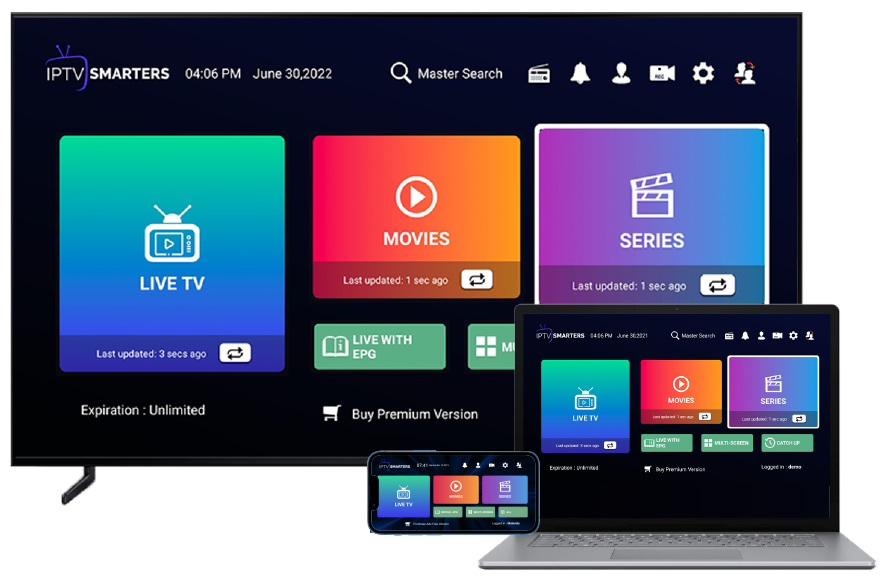Improve Your Viewing Experience: IPTV Subscription with Substantial Networks
Improve Your Viewing Experience: IPTV Subscription with Substantial Networks
Blog Article
How IPTV Functions: A Step-by-Step Guide to Net Procedure Tv Innovation
Internet Protocol Tv (IPTV) has reinvented the way we take in tv content, providing a new realm of opportunities with the power of the internet. Understanding the complexities of how IPTV functions can clarify the technology that drives this cutting-edge type of media shipment. From the basic principles of IPTV to the intricate procedure of content delivery, each step plays a crucial duty in guaranteeing a seamless viewing experience. In this guide, we will uncover the underlying systems that make IPTV an interesting blend of modern technology and amusement.
IPTV Essentials
In recognizing IPTV essentials, it is crucial to comprehend the basic operations of this modern technology in supplying tv material over the web. IPTV, which means Web Procedure Television, utilizes Net Method (IP) networks to transfer television content to users' tools. Unlike typical approaches of broadcasting television web content via cord or satellite signals, IPTV streams media with high-speed net connections.

Furthermore, IPTV permits interactive capabilities, such as video clip as needed (VOD) and electronic program overviews (EPG), improving the customer experience by providing even more control and versatility in accessing material. Overall, recognizing the essentials of IPTV establishes the structure for exploring its even more advanced functionalities and the benefits it provides to modern tv consumption.
Web Content Shipment Refine
Reliable material distribution in IPTV systems includes a well-structured procedure that guarantees smooth transmission of television content over IP networks. The web content shipment procedure in IPTV begins with the production of the video web content, which is then inscribed into electronic format appropriate for IP transmission. This encoded material is then firmly stored on servers recognized as media servers. When a visitor demands particular content, the IPTV system fetches the requested data from the media web servers and provides it to the visitor's device online.

Middleware Functionality
With the assimilation of middleware, IPTV systems gain enhanced capability that improves customer interaction and content administration. One of the key features of middleware in IPTV is to enable tailored user experiences by supplying functions such as interactive program guides, video-on-demand solutions, interactive advertising, and individual choices management.

Device Compatibility
Provided the critical role of middleware in enabling seamless communication and content administration in IPTV systems, a critical facet to take into consideration is the compatibility of tools utilized for accessing the IPTV services. Gadget compatibility is necessary for making sure a smooth individual experience and ideal performance when accessing IPTV web content.
In the context of IPTV, gadget compatibility describes the capability of a device to effectively connect with the IPTV solution, show content properly, and support the necessary methods and codecs for streaming video clip material online. Various devices, such as smart Televisions, set-top boxes, mobile phones, tablets, and computer systems, might have varying degrees of compatibility with IPTV solutions.
To ensure a seamless viewing experience, it is essential for individuals to choose tools that work with the certain IPTV service they are utilizing. Additionally, IPTV solution suppliers ought to use assistance for a variety of tools to satisfy the varied requirements of their customer base. By prioritizing device compatibility, both users and provider can boost the overall IPTV experience.
High Quality of Service (QoS)
Taking into consideration the important role of preserving a high standard of performance and reliability in IPTV systems, making certain constant Top quality of Service (QoS) stays a fundamental element of the customer experience. QoS in IPTV refers to the ability of the system to provide web content with minimal interruptions, high resolution, and quickly loading times. To accomplish optimal QoS, different variables his response need to be attended to. Network bandwidth is important to sustain high-grade video clip streaming without buffering or pixelation. In addition, latency, jitter, and packet loss should be lessened to boost the viewing experience.
Provider use QoS systems such as web traffic prioritization, buffering, and error adjustment to maintain a stable IPTV service. By prioritizing IPTV website traffic over much less time-sensitive data, companies can guarantee smooth playback even throughout optimal use hours. Buffering assists make up for network fluctuations, while mistake modification methods enhance data stability.
Constant monitoring and optimization of QoS parameters are vital to adjust to transforming network conditions and customer demands. Ultimately, a robust my review here QoS framework is vital for supplying a seamless and enjoyable IPTV experience to customers.
Final Thought
In final thought, IPTV runs through the transmission of tv web content over net protocol networks. High quality of Solution plays an essential duty in maintaining the efficiency and dependability of IPTV solutions - IPTV subscription.
Report this page